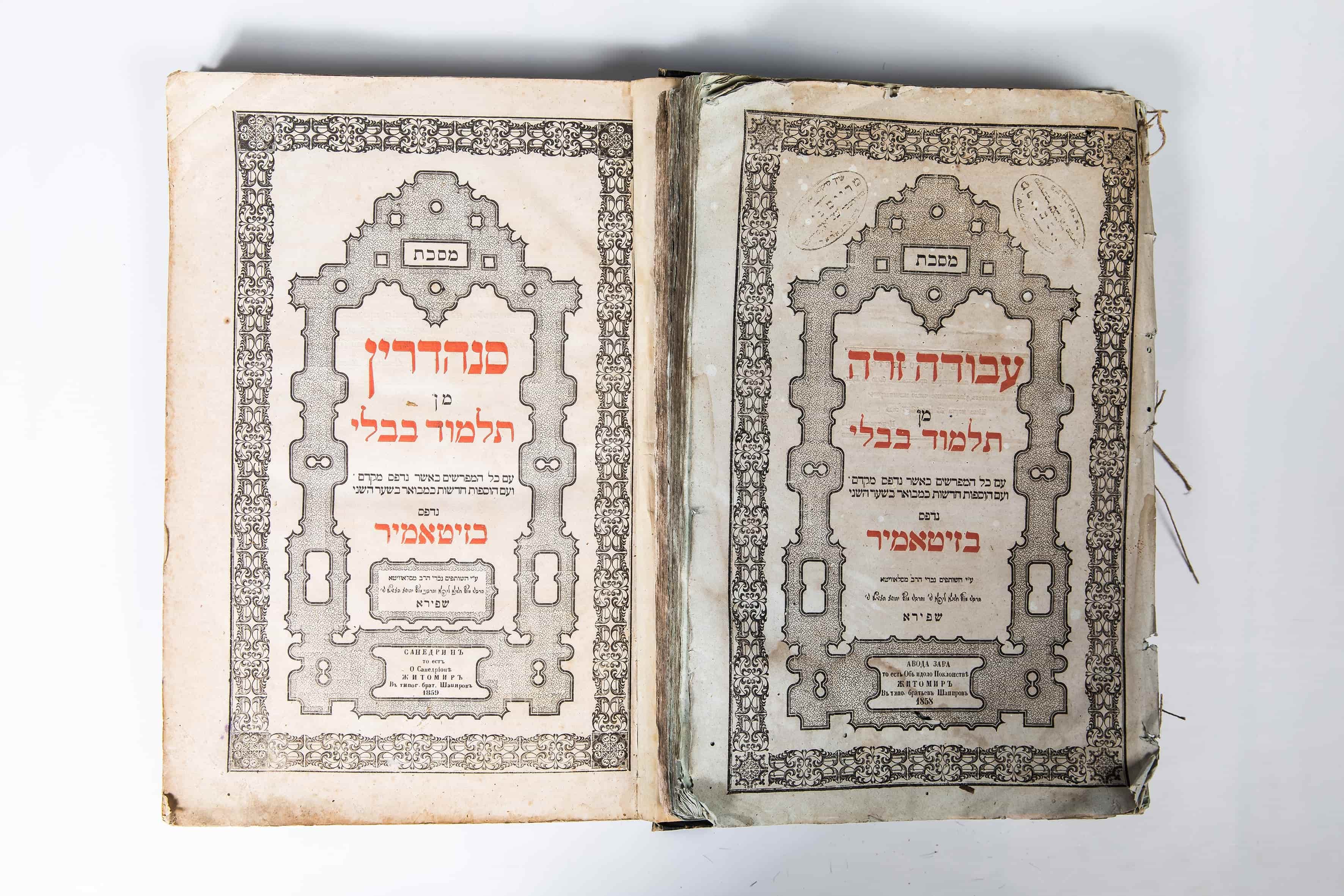Museum “Jewish Memory and Holocaust in Ukraine” has one of the largest collections of Jewish objects in Ukraine and Central-Eastern Europe. A special place in it belongs to unique religious publications, the history of which dates back almost two centuries.
Each of them is a kind of treasury and at the same time a source of G-d's Wisdom. At the same time, the publication is quite a rare bibliographic monument with its own history, dramatic vicissitudes of creation and existence. Such artifacts include treatises published by the Shapiro brothers in the middle of the 19th century.
The Shapiro brothers publishing house is one of the most famous European printing houses that published a variety of Judaic literature. However, her most important achievement was the repeated edition of the Babylonian Talmud. Due to the thoroughness of the work, the exceptional polygraphic quality, the books of the Shapiro publishing house quickly became known throughout Central and Eastern Europe and took an honorable place in the book collections of many Jewish communities and religious educational institutions far beyond the borders of modern Ukraine.
The legendary founder of the publishing house was Moshe Shapiro (1762-1839), the rabbi of the town of Slavuta, Zaslavsky District, Volyn Governorate (now Slavuta, Khmelnytskyi Region). In order to spread the wisdom of Hasidism, Rebbe Shapiro in 1791 managed to obtain permission to create a printing press from the then owner of Slavuta, the Polish magnate Prince Eustafius Sangushko. Despite the fact that in 1793, as a result of the Second Partition of the Polish-Lithuanian Commonwealth, Slavuta became part of the Russian Empire, the printing press not only did not disappear, but became the place where in 1797 (according to some sources – in 1796) one of the most important for of the entire Hasidic movement – “Tania” (“Likutei Amarim”) Shneur Zalman of Lyad (Alter Rebbe) (1745–1812).
In 1803–1806, the printing house in Slavuta created its own first edition of the Babylonian Talmud. Almost immediately, the books from the Shapiro publishing house spread throughout the Jewish community and instantly turned into a bibliographic rarity desired by many. Considering the success, in 1808 the publishing house began work on the second edition of the Talmud, all parts of which became available to readers in 1813.
Subsequently, in 1823, the Slavuta publishing house presented the world with the third edition of the Babylonian Talmud. In general, this activity of the publishers from Slavuta was a unique phenomenon in religious book publishing, because over the course of two decades, 3 large-scale multi-volume treatises were prepared, as well as a large number of other Jewish texts, which, due to their quality, enjoyed undeniable authority and demand not only in the Hasidic environment, but also among Jewish communities in Lithuania and parts of Belarus, which were in a kind of theological opposition to Hasidism – the so-called “misnagdim”.
From 1823, Rebbe Moshe's sons – son Shmuel Shapiro (1784–1863) and son Pinchas Shapiro (1792–1872) took care of the publishing house. On the one hand, they managed to expand their father's business (for example, their own paper factory appeared in Slavuta, which not only provided printing material, but also a significant number of Slavuta residents with work), on the other hand, the Shapiro brothers were faced with numerous trials: strengthening royal censorship in the field of publishing religious books, unjust accusation and, as a result, punishment in the form of many years of hard labor and exile, but most importantly – the death in prison of his father – Mr. Moshe Shapiro.
In 1845, the imperial authorities introduced additional restrictions for the Jewish book. According to the Regulation on Jewish printing houses, the latter could exist only in 2 cities of the Russian Empire – Vilno (now Vilnius, Lithuania) and Zhytomyr. In view of this, the publishing house of the Shapiro brothers was forced to move from Slavuta to Zhytomyr. It is also worth pointing out that from the moment the Regulation was announced, the activity of Jewish printing houses was under the supervision of the Ministry of National Education, whose competence included the right to dispose of the property of publishing centers that existed before 1845. For the Shapiro brothers, this meant the de facto nationalization of their property. Despite this, Mr. Shmuel Shapiro and Mr. Pinchas Shapiro did not give up their life's work, obtained the right to lease the printing house and successfully resumed its activities in a new location.
It is here in Zhytomyr that another edition of the Babylonian Talmud appears, parts of which are presented in Museum “Jewish Memory and Holocaust in Ukraine”. In particular, visitors can see and familiarize themselves with the tractate “Avod Zarah” (from the Hebrew “another service”) (edition of 1858) – a part of the Talmud, which outlines the rules for the coexistence of Jews and peoples who practiced paganism (in particular, the text details the prohibition of idolatry etc.), as well as “Sanhedrin” (from the Hebrew “joint meeting”) (edition of 1859) – a treatise that established the rules of traditional Jewish criminal and criminal procedural law.
So, as you can see, these majestic volumes in the museum showcases are not only a source of religious wisdom, but also a way to learn about the unique history of Jewish communities on Ukrainian territory and its prominent figures.
Yehor Vradii

